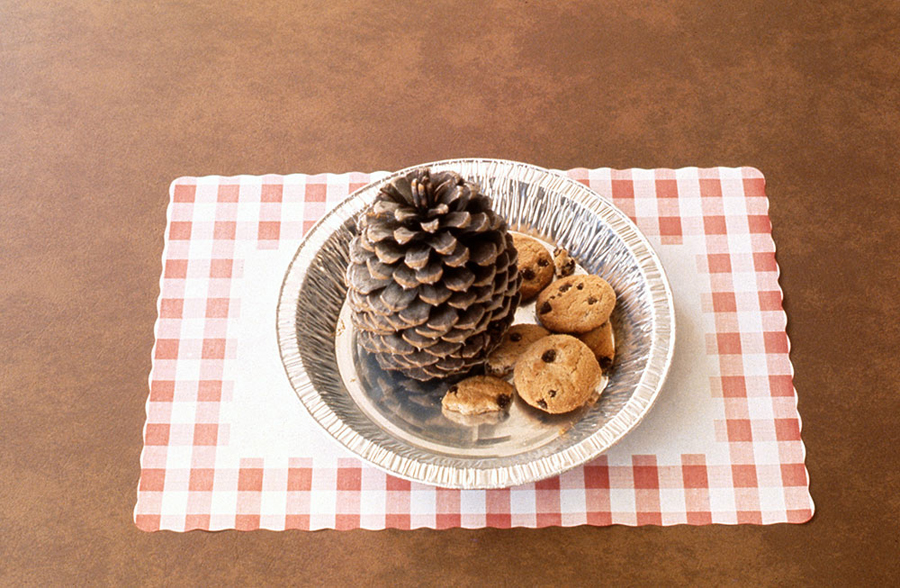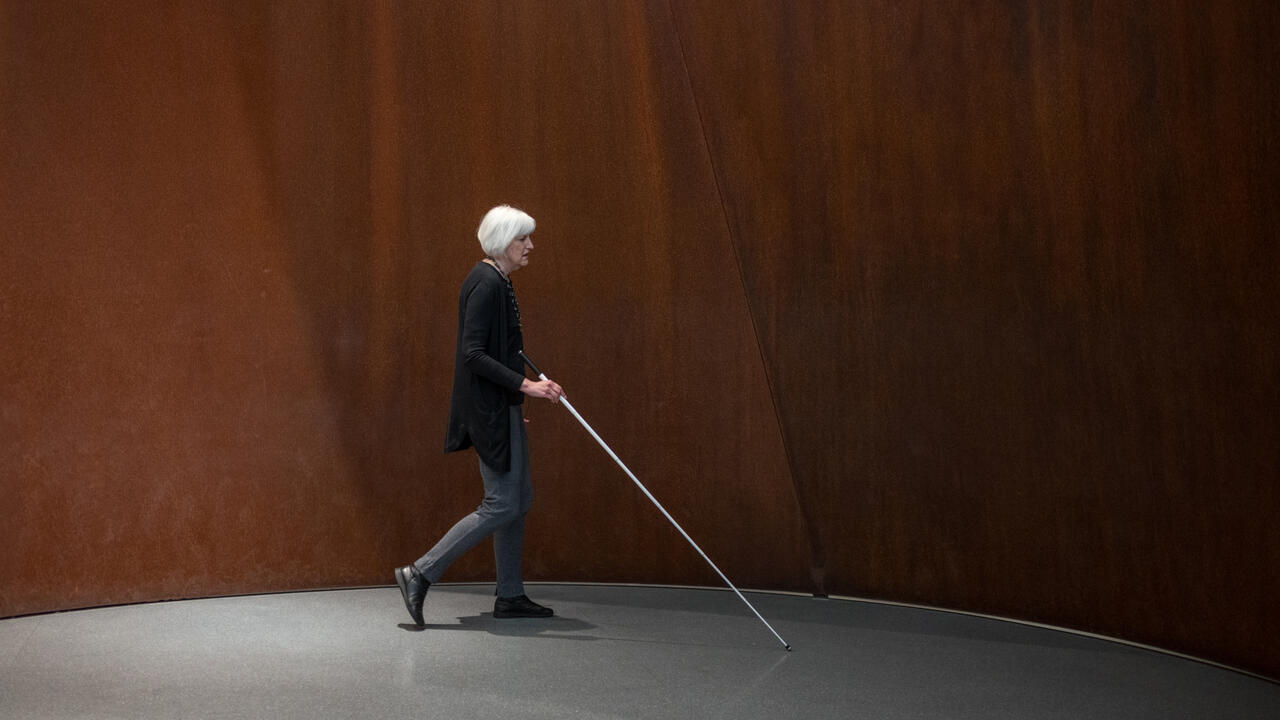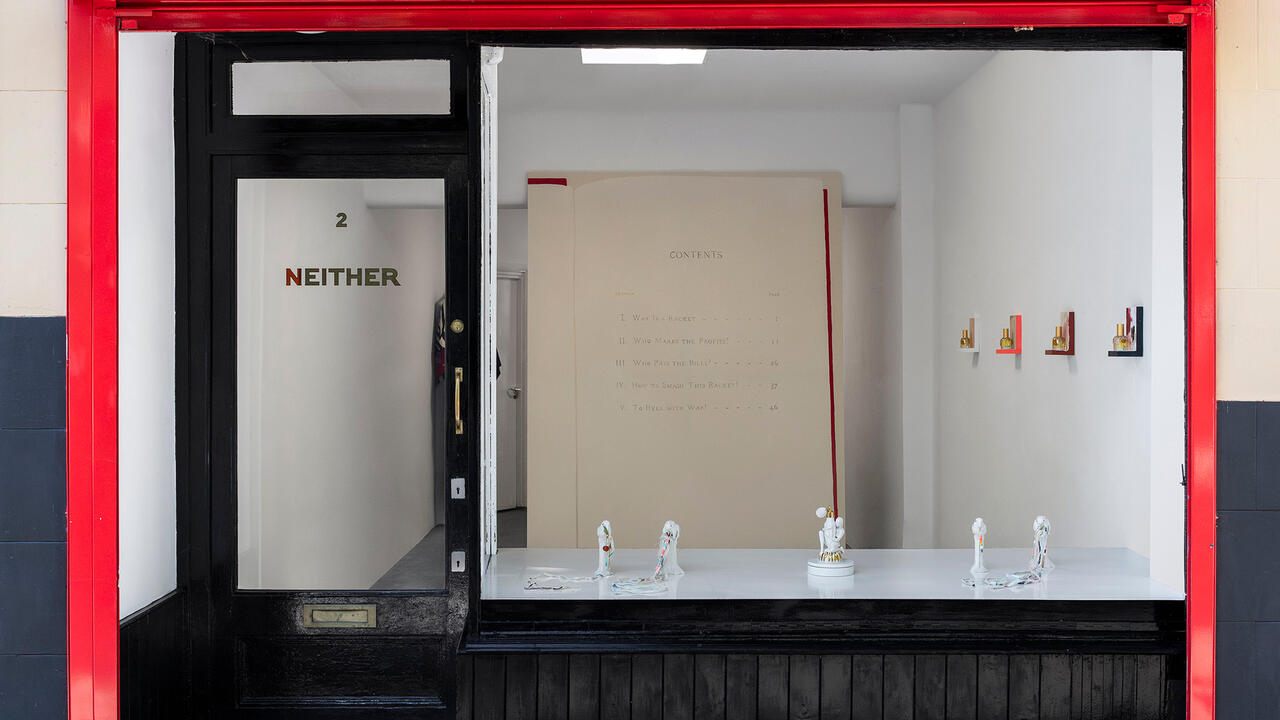What Happens When Artists Run Restaurants?
From Tina Girouard, Carol Goodden and Gordon Matta-Clark’s SoHo restaurant to Allen Ruppersberg’s LA café, there’s an art to feeding
From Tina Girouard, Carol Goodden and Gordon Matta-Clark’s SoHo restaurant to Allen Ruppersberg’s LA café, there’s an art to feeding

Last month, a new sake bar opened at London’s Institute of Contemporary Arts: a softly lit tunnel of booze that promises the kind of entrancing conversation one can never quite remember the next morning. A permanent installation designed by the artist Rirkrit Tiravanija, untitled 2019 (the form of the flower is unknown to the seed) is furnished with tables, chairs and crockery made in Tiravanija’s studio in Chiang Mai and the walls are decorated with sunset colours. For Tiravanija, a standard-bearer for relational aesthetics, the sake bar marks a return to the ICA where, in 1993, as part of the exhibition ‘Real Time’, he performed his work Untitled (Free) (1992), cooking Thai curry and offering it to visitors.
The art of feeding others occupies an expansive field, which artists have increasingly explored since the late 1960s, focusing on various aspects of cooking and eating – including the provenance of ingredients, the authorship of recipes and the people who prepare and serve dishes. A range of different economic and social conditions have led artists to experiment with setting up restaurants over the past 50 years, from Tina Girouard, Carol Goodden and Gordon Matta-Clark’s FOOD (1971/73), which served affordable meals to struggling artists living and working in New York’s SoHo, to Damien Hirst’s Pharmacy (1998–2003), which opened in London’s Notting Hill at the height of former UK Prime Minister Tony Blair’s cultural branding exercise ‘Cool Britannia’ and epitomized the extravagances of late-1990s London, to Michael Rakowitz’s Enemy Kitchen (2003–ongoing), which draws on his Jewish-Iraqi heritage to provide cookery workshops and mobile catering. Food and its packaging are important materials for Rakowitz, as evidenced in both his current solo exhibition at London’s Whitechapel Gallery as well as in his work for the Fourth Plinth in Trafalgar Square, The Invisible Enemy Should Not Exist (2018): a re-creation of the winged bull from the palace of Nineveh made from recycled Iraqi date syrup cans.

Enemy Kitchen (2003–ongoing)
Michael Rakowitz
In a recent tribute to his mother, Rakowitz described how, in 1991, she began teaching him the recipes of his Iraqi Jewish grandparents ‘to undo the dehumanization caused by the Gulf War’. Later, a remark she made about the dearth of Iraqi restaurants in New York inspired Rakowitz to use cooking as a means of sharing knowledge about his heritage and present-day Iraq, in an attempt to reach beyond the divisive stereotypes of the Middle East propagated by the media and the US government. Rakowitz and his mother started conducting cooking workshops during which they teach Baghdadi recipes to middle- and high-school students. Since 2012, the Enemy Kitchen project has also run a food truck in Chicago serving Baghdadi cuisine. In an inversion of the war-time power dynamic, the sous-chefs and servers working in the truck are American veterans of the Iraq war, who now take their orders from Iraqi chefs.

FOOD (1971/73)
Established by Tina Girouard, Carol Goodden and Gordon Matta-Clark
In 1971, artists Tina Girouard, Carol Goodden and Gordon Matta-Clark founded the restaurant FOOD in New York’s SoHo. Although some lauded FOOD as SoHo’s first restaurant, an iconic photograph of the trio in front of the building before renovations began shows that it had a previous incarnation as ‘Doris’s restaurant’, which sold ‘Comidas Criollas’ (creole meals). At FOOD, artists designed the menus, cooked the meals and waited on the tables, which spilled over with a cast of up-and-coming artists, dancers (Goodden was also a member of choreographer Trisha Brown’s company), musicians and locals. Diners might be treated to meals by Donald Judd or Robert Rauschenberg, whose assistant, Hisachika Takahashi, served sashimi at FOOD long before California rolls were concocted on the West Coast. Over the years, more than 300 artists worked the open kitchen, serving a growing community of SoHo creatives. Matta-Clark’s ‘bone dinner’, conceived as a piece of performance art, started with oxtail soup followed by roasted marrow bones and frogs’ legs, and ended with each guest being offered a necklace made from their leftover bones, which had been retrieved from their plates and hastily scrubbed in the kitchen.

Al’s Café (1969)
Allen Ruppersberg
Al’s Café at 1913 West 6th Street, Los Angeles, was open on Thursdays evenings from 8–11pm for three months in 1969. Ruppersberg took on all the roles – cook, manager and bottle washer – in a café with a quaint exterior and a quintessential American diner décor. Dishes were based on what you might eat at any diner but were inflected with Ruppersberg’s mischievous and imaginative twists. You could order a starter of ‘Sliced bark’ or ‘Cotton covered with stardust’ (US$1 each), followed by the rather more pricey (at US$2.75) but exotic-sounding ‘Fillet of Southern California beach’. Such geologically themed dishes poked fun at land artists, whose work was then in vogue. While Ruppersberg was playing host to a clientele of LA artists at Al’s Café, his work was contemporaneously being shown as part of Harald Szeemann’s seminal 1969 exhibition ‘Live in Your Head: When Attitudes Become Form’ at Kunsthalle Bern. Rather than accompany his work to Switzerland, however, Ruppersberg decided to stay in LA to tend the café. What mattered most to him was that Al’s Café was a place where people could drink (real) beer and have a good time, fostering a scene in a city that, unlike New York, had no art bars at the time. The café was a precursor to Al’s Grand Hotel, an installation that operated as a fully functioning seven-room hotel, which Ruppersberg ran for three months in 1971.
Main image: Rirkrit Tiravanija, untitled 2019 (the form of the flower is unknown to the seed), 2019, installation view. Courtesy: ICA, London; photograph: Mark Blower




















